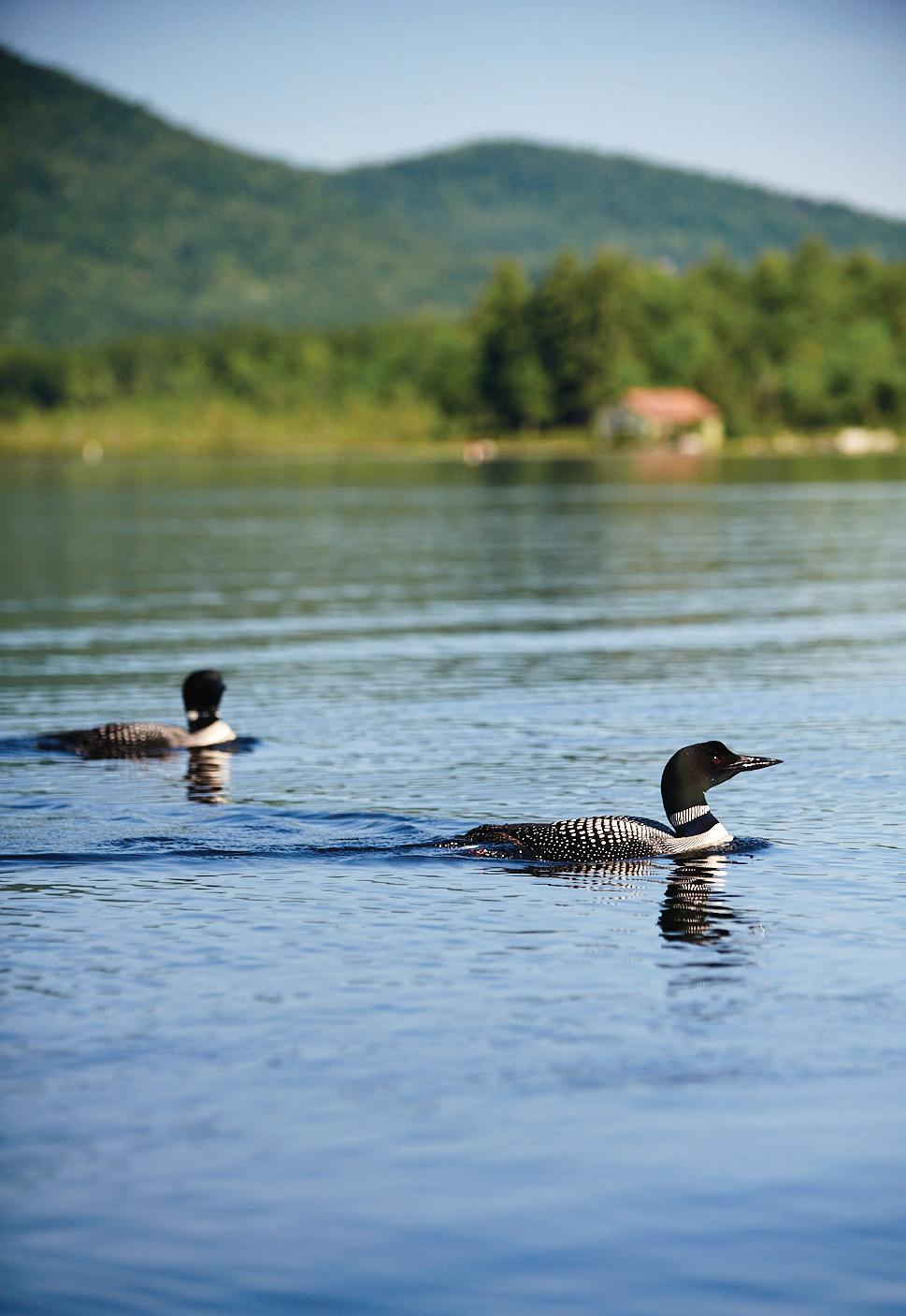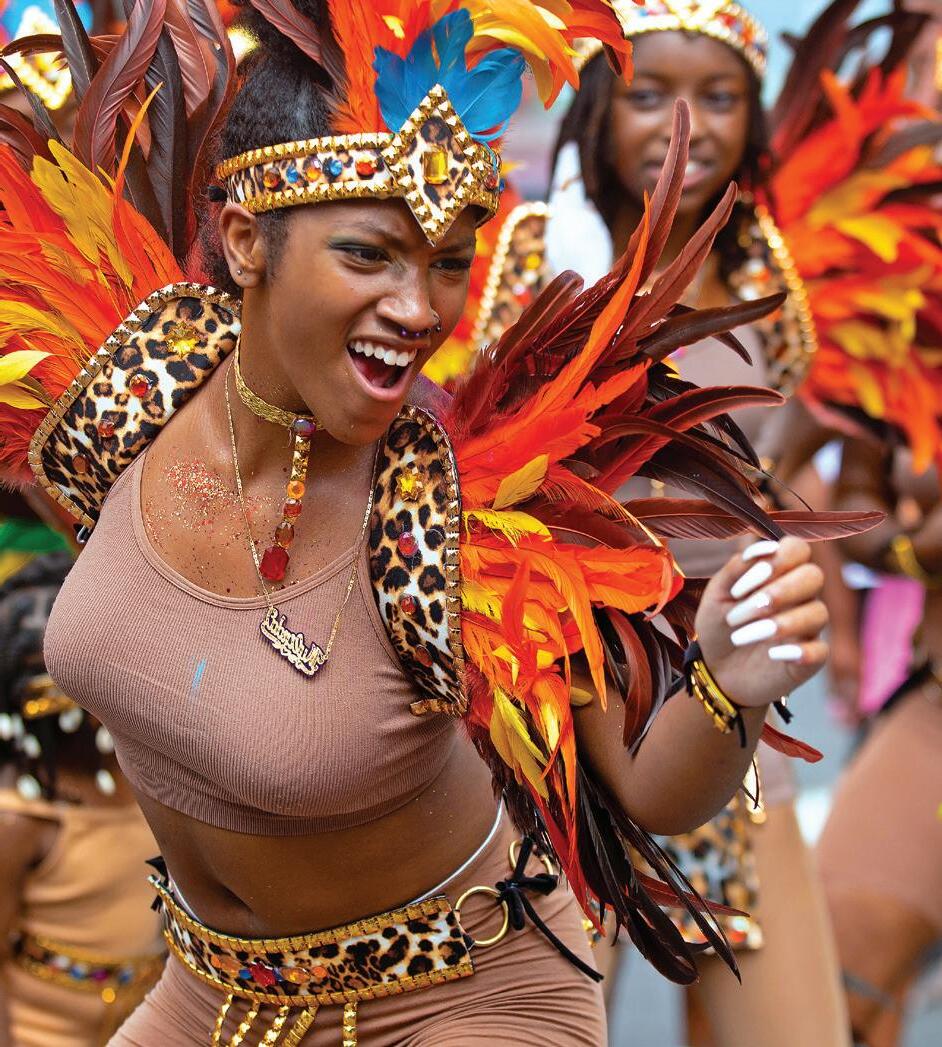
2 minute read
WILDLIFE ENCOUNTERS
The ways in which you can explore New England’s wildlife are as rich and varied as the species that make their home in this region, from black bears and eagles to whales and great white sharks. Nature centers, wildlife sanctuaries, and guided tours all help bring visitors closer to these animals while also offering education about how to preserve and protect them and their habitat. And the best thing? You can’t go wrong with whatever adventure you choose, because you’ll almost certainly see something extraordinary, and learn things that will stay with you long after you’ve returned home.
MASSACHUSETTS is ranked as one of the top 10 whale-watching spots in the world for good reason: Just 25 nautical miles from Boston is the Stellwagen Bank National Marine Sanctuary, an 842-square-mile (2,180km²) refuge that provides a home for many kinds of marine life but most notably humpback, pilot, and blue whales, which come here to feed from spring through fall. And getting out to see these majestic animals couldn’t be easier, since whale-watching tours operate all along the state’s coast, from the North Shore to Cape Cod.
Massachusetts waters are also the seasonal home of another famous resident of the deep, the great white shark. The Atlantic White Shark Conservancy (AWSC) on Cape Cod operates two educational centers, in Chatham and in Provincetown, with exhibits designed to engage visitors and teach them about shark research, conservation, and natural history. AWSC also leads private onthe-water tours for those hoping to glimpse great white sharks in their natural environment. Passengers get an up-close view of the group’s groundbreaking work, plus a chance to help out with vital research.
BIRD-WATCHING HOT SPOTS
MICHAEL BRYANT Boston-based photographer and birder (NatureMan Mike.com)

Bryant says that people might be surprised by the number of great birding spots in Boston, including Mount Auburn Cemetery in Cambridge, Belle Isle Marsh Reservation in East Boston, and Millennium Park in West Roxbury. But his go-to spot is Franklin Park, “a gorgeous green space of 485 acres (196ha) right in Boston with all these amazing natural habitats,” he says. “There’s Scarborough Pond and a big wooded area that’s literally called The Wilderness. You’re going to see a lot of songbirds—many different thrushes, for example, and Eastern towhees.”
The lineup also includes year-round favorites like the tufted titmouse and the black-capped chickadee.
The haunting call of the loon is a signature summer sound in New England, and in NEW HAMPSHIRE’s Lakes District these eye-catching black-and-white water birds have given the region an identity all its own.

Squam Lakes Natural Science Center in Holderness offers the ideal introduction to the loon, which was driven to near extinction in parts of New England in the late 19th century and is still considered a threatened species in New Hampshire. On tours that span the breadth of beautiful Squam Lake, one of the center’s naturalists and a Loon Preservation Committee biologist help teach passengers about the birds and their habitat, as they keep an eye out for loons and even the occasional bald eagle.
In Connecticut, Barn Island Wildlife Management Area in Stonington is the state’s largest coastal management area, offering feeding and nesting habitats for several Connecticutspecific birds, such as seaside and saltmarsh sharp-tailed sparrows and king rails. “There are warblers all over the place, too, like yellow and Cape May warblers,” Bryant says.
Rhode Island offers a few more of Bryant’s favorite options. In Middletown, Sachuest Point National Wildlife Refuge is a 242-acre (98ha) property that’s home to more than 200 bird species, including sea ducks, loons, gulls, cormorants, and other waterfowl who winter here. “And during spring migration, it’s very active,” he says, with species such as snow buntings, horned larks, and thrushes all making Sachuest Point a stop on their way north. At the nearby Norman Bird Sanctuary, meanwhile, 40 acres of grassland habitat have been restored for a range of species, including Savannah sparrows, bobolinks and Eastern kingbirds.



















